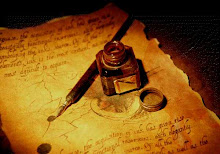News Writing 101
Basic Guidelines in News Writing
News style (also journalistic style or news writing style) is the prose style used for news reporting in media such as newspapers, radio and television. News style encompasses not only vocabulary and sentence structure, but also the way in which stories present the information in terms of relative importance, tone, and intended audience.
News writing attempts to answer all the basic questions about any particular event - who, what, when, where and why (the Five Ws) and also often how - at the opening of the article. This form of structure is sometimes called the "inverted pyramid", to refer to the decreasing importance of information in subsequent paragraphs.
News stories also contain at least one of the following important characteristics relative to the intended audience: proximity, prominence, timeliness, human interest, oddity, or consequence.
Overview
Newspapers generally adhere to an expository writing style. Over time and place, journalism ethics and standards have varied in the degree of objectivity or sensationalism they incorporate. Definitions of professionalism differ among news agencies; their reputations, according to professional standards, and depending on what the reader wants, are often tied to the appearance of objectivity.
In its most ideal form, news writing strives to be intelligible to the majority of readers, as well as to be engaging and succinct. Within these limits, news stories also aim to be comprehensive. However, other factors are involved, some of which are derived from the media form, and others stylistic. Among the larger and more respected newspapers, fairness and balance is a major factor in presenting information.
Headline - Subhead - Lead (5 W's and 1 H) or Intro
The headline, heading, head or title of a story; "hed" in journalists' jargon
The subhead, a phrase, a sentence or several sentences near the title of an article or story, a quick blurb or article teaser
The most important structural element of a story is the lead (or "intro" in the UK) — the news story's first, or leading, sentence. Basically, the rule of thumb says the lead should answer most or all of the five Ws, few leads can fit all of these.
Inverted pyramid structure
Journalists usually describe the organization or structure of a news story as an inverted pyramid. The essential and most interesting elements of a story are usually put at the beginning, with supporting information following in order of diminishing importance.
This structure enables readers to stop reading at any point and still come away with the essence of a story. It allows people to explore a topic to only the depth that their curiosity takes them, and without the imposition of details or nuances that they could consider irrelevant, but still making that information available to more interested readers.
The inverted pyramid structure also enables articles to be trimmed to any arbitrary length during layout, to fit in the space available.
News articles follow their own style. This style is not the same as the style used in essays, feature articles, how-to articles, memoirs, or in fiction. When writing news articles, consider this guide to news article writing:
Style of a News Article:
1. Inverted Pyramid Style
Inverted pyramid style is the basis for all news stories. Picture a pyramid, and turn it upside down. What is now the top of the news story is where all of the meat is in the story.
The practical and historical reason for this stems from print news. Articles were written in column inches. Sometimes, due to space constrictions, editors had to cut parts of news stories.
2. News Writing and the Fiction Connection
News writing is not like fiction. Forget the suspense building techniques and foreshadowing of fiction. Give the readers the facts right up front. Don't save the good stuff for the middle or the end of the story. Approach the news story as if the average reader will only be reading the first three or four paragraphs of any news story.
3. Keep Your Opinion to Yourself
When writing a news article, be as objective as possible. If you find yourself including your opinion, consider if you should instead write an Op/Ed piece about the event. Sometimes writing an Op/Ed piece is the only way you will write about an event. After the Op/Ed piece is finished, the writer may be done with the news event. Or, once the op/ed is out of your system, you may be ready to sit down and right the facts.
Beginning news writers who have their choice of stories, may want to practice writing news stories by starting with events that interest them but have not emotional impact on them. By removing the emotional aspect up front, the writer will be less likely to include opinions in their articles.
As the beginning writer gains skill with news writing, approaching more emotional and
visceral subjects will be easier to cover while still maintaining objectivity.
For your information, guidance and compliance.
Ms. Myraine Carluen - Policarpio

